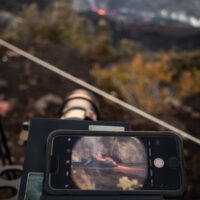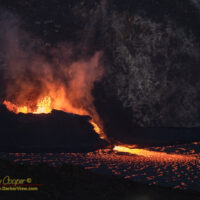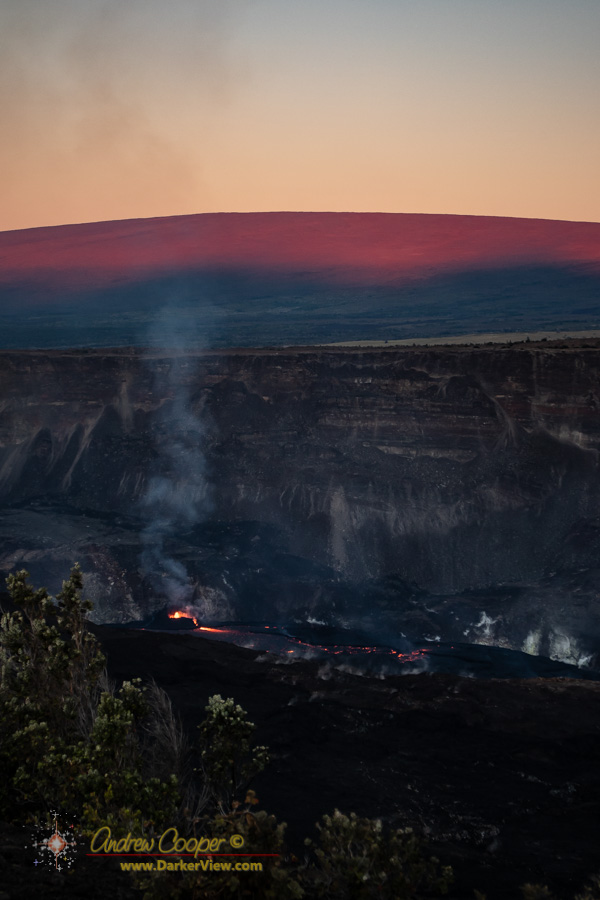
Category: Kilauea
Exploring an active volcano
Lava Lake in the Night
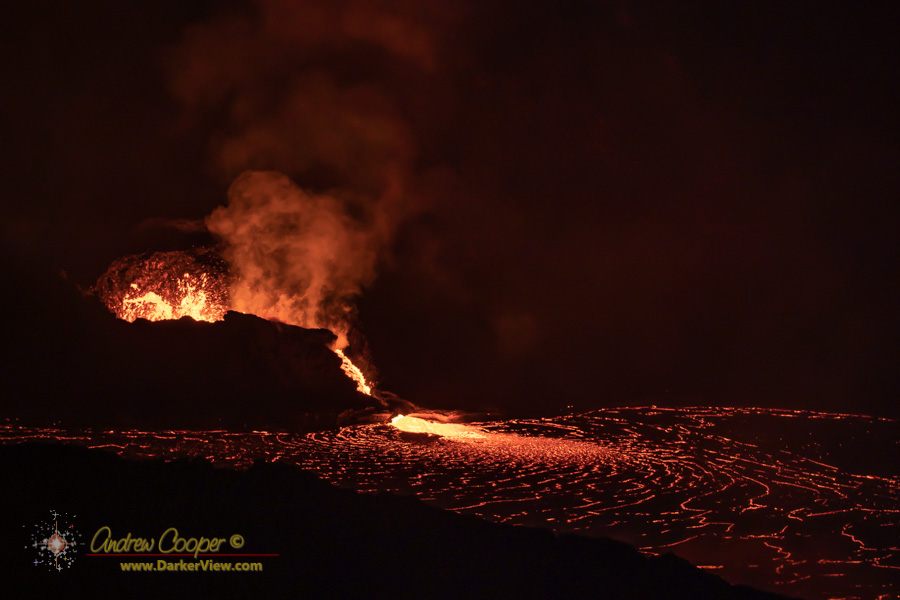
A Universal Afocal Adapter
A couple weeks ago at the volcano I let quite a few folks take imagery of the lava using the afocal technique, simply holding the phone up to the eyepiece. This works rather well as the phone uses a lens much like the human eye, about the same aperture.
The only real issue is holding a phone in just the right spot. Folks wanted video, but holding the phone steady is a real challenge. I had thought of making something to do this many times, last weekend I did it.
A session of playing around in 3D CAD resulting in a couple bits of clever plastic printed with the 3D printer… Done.
There are commercial solutions for this available, quite a few actually. But most of these are intended to adapt to a single phone, using some sort of clamping arrangement that you have to setup for a particular phone. I envisioned something that was more universal, quickly adapting to any phone.
The method I chose was a sliding magnetic platform that holds the phone. Just a simple shelf actually, set the phone on it and slide until you get it lined up. The base piece is printed with a recess into which a steel plate is set. The slider has three 8mm x 2mm neodymium magnets to securely grab the steel plate.
It took a bit of work to cut and file the steel plate to neatly fit the base, a bit of inlay work. Otherwise making the piece is quite easy. The only design issue is that this adapter is setup to fit a single eyepiece, a Televue Panoptic 27mm, and cannot be easily adapted to others.
The 3D CAD files are linked below. I have included the SCAD source file to allow tinkering with the design, possibly adapting to a different eyepiece. Both parts should be printed with support on, the pockets for the glued bits will have to be cleaned out, the resulting rough surfaces just right to recieve epoxy.
At the Keanakakoʻi Overlook I was able to test the adapter with a variety of different phones, both iPhone and Android, graciously lent to me for my experimentation. OK, the owners may have wanted a few lava photos. There was no difficulty using the adapter other than a moment or two needed to line up the camera with the exit pupil of the eyepiece. The result was more than a few smiles.
Underworld Entry
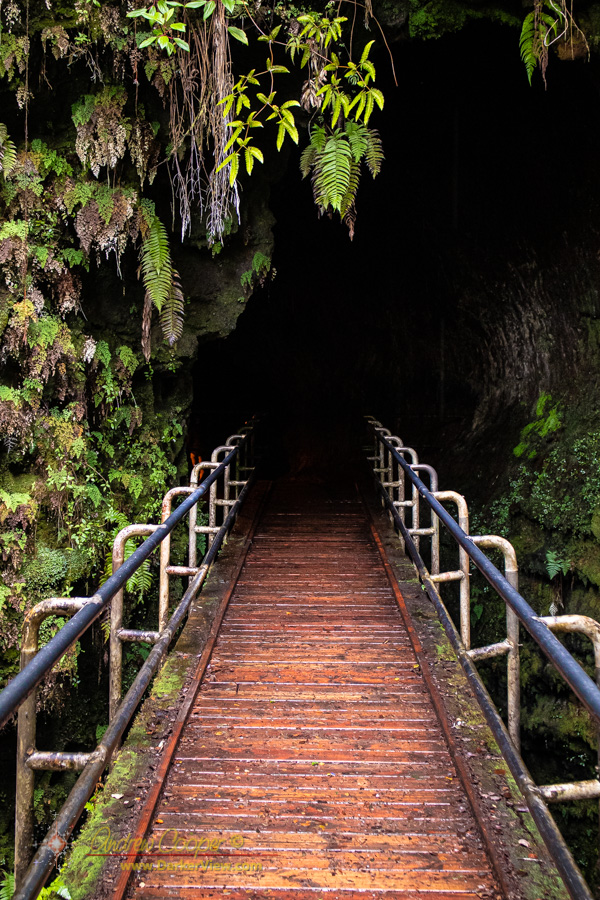
Spatter Cone
Watching the current eruption at Kilauea where the western vent fountains and churns leaves one with a practical understanding of how a spatter cone or spatter rampart forms. The blobs and globs of lava land around the vent where they cool. This builds up a substantial edifice around the vent.
The process is illuminating to watch in this current eruption. Every few minutes a large spash or jet of lava escapes the boiling caldron in the middle. The lava spashes across the ground around the vent. At first bright orange, the splash slowly cools and fades to deep red, then dark at it solidifies. The spatter cone is just a little bit bigger.
The spatter cone grows and changes shape daily. Visiting the eruption after a couple weeks one finds the cone drastically reshaped and much larger. Occasional a side will collapse and the process begins anew.
While it might seem fun to get a closer look at the current vent, this idea is also a quick way to die, the gasses and heat would quickly kill anyone who approached too closely.
Continue reading “Spatter Cone”Lava Lake Panorama
One of the things I remembered to do on my second visit to the lava lake was to shoot a panorama set of the lake surface. The result has been assembled here, click on the image to get a full sized version for viewing..
The lake has a number of interesting features most visitors miss when viewing the active vent. The remnant of an older vent can be seen as the rough area on the far side, while on the near side is the raft or floating island that remains from the previous lava lake earlier in the year. Both of these features appear to be floating as they rise along with the lake level.
According to the latest USGS report the lake is approximately eight meters (26 feet) higher at the western end near the active vent than the eastern end. The level has risen about 51 meters (167 feet) since this eruption stated on September 29th for a total volume of 19.9 million cubic meters (5.3 billion gallons) of new lava. An interesting raised edge is visible along the active margin with the thick inactive crust that has formed over the last month.

Yet Another Volcano Run
Once was not enough, I had to do it again. The allure of lava too much I planned yet another run across island in the middle of the night to see the lava at Kilauea.
This time Deb would come along, mistakenly agreeing to to 0130 alarm clock and possibly regretting it as she climbed out of bed. Thus we drove through the night passing through the park gates a little before 4am.
A larger crowd greeted us this time. The parking lot was lamost half full and there were more folks passing us on the walk out to the viewpoint.
This trip would feature a bit of moonlight over the caldera rather than the dark skies of two weeks ago, a quarter moon in the eastern sky. I had hoped for a few thin moonlit clouds to use in the compositions, but this did not happen. The morning was completely cloud free over the caldera, and nearly calm, the plume rising striaght up from the lava.
Continue reading “Yet Another Volcano Run”Bubbling Caldron
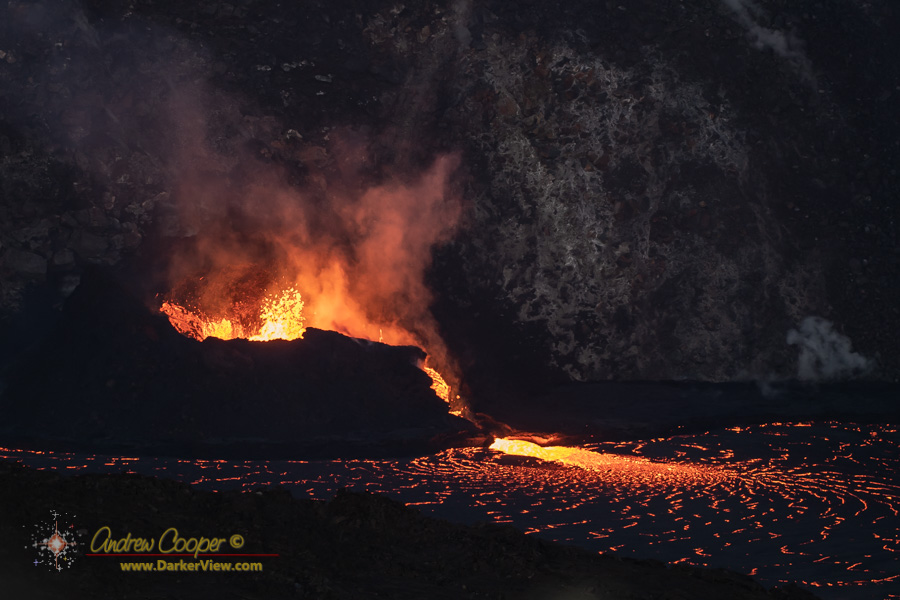
Kilauea Rainforest
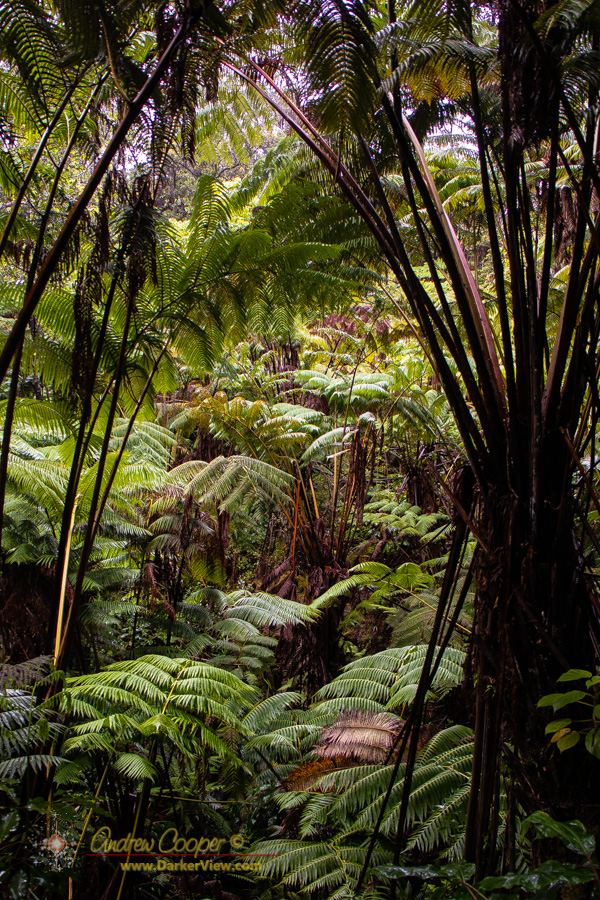
Dead End Road


